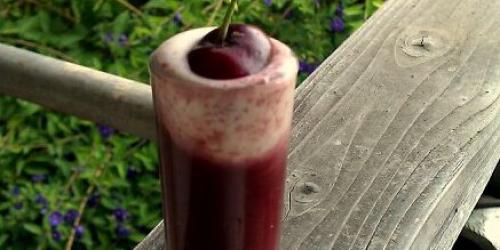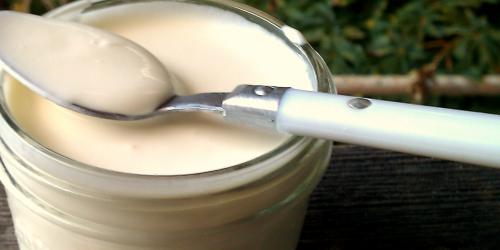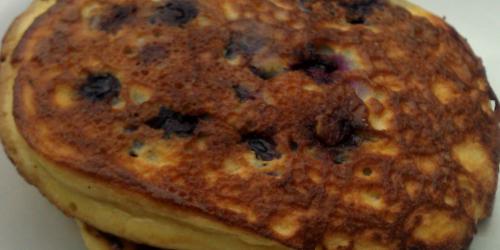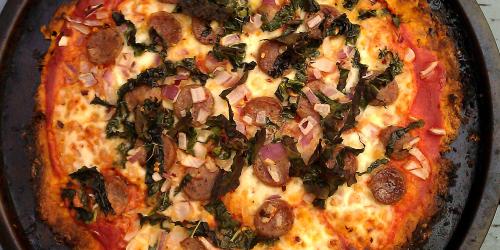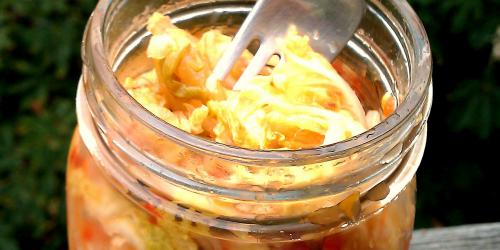This is not a health blog.
(I mean, obviously.)
Still, since I write the material in it and I’m the one who generally eats the results of its posts, it does tend to reflect the food/health choices I’m making at the time of each entry. Lately, you might have noticed (or, you may not have—very few people have actually said anything to me about it) that I’ve been focusing a bit on grain-free, high-protein dishes. Maybe you thought this was cool (one of my health heroes, Mark Sisson did!), maybe you were left longing for carb-ier days.
Here’s my deal: I cook, eat and write for a living. It’s awesome and I wouldn’t trade it for any other career. I am absurdly lucky to get to live my dream and make money doing it. That said, such an occupation has the potential to wreak havoc on one’s waistline. The more opportunities come my way, the more I have to cook, eat and write to keep up. I’m an avid runner, but as I’ve gotten older I’ve found that burning calories isn’t always enough.
So for about a month now, I’ve been experimenting with reducing my grain intake, increasing the amount of protein I eat and adding even more vegetables to my already veggie-heavy diet. I’m sorta-kinda following The Primal Blueprint, but in a very flexible, dairy-embracing kind of way. The results? Well, it’s still early, but I gotta tell you, my energy levels have been awesome, my skin is incredibly clear and I’ve even lost a few pounds.
That said, my mantra, when it comes to food and health (as well as a whole lot of other things in life) is moderation, moderation, moderation. No food is inherently bad, you just have to exercise control and not eat it all the time. This is by no means the end of breads, ice cream or pasta on this site—just the introduction of something new.
But anyway, on to the pizza! Even if you aren’t into the sort of eating I’m doing these days, you’ll love this recipe. Roasted, mashed cauliflower makes for a slightly nutty, flavorful pizza base (it’s different from regular pizza dough, but still very yummy). I adore this topping combination—the spicy Andouille sausage goes nicely with the mellow mozzarella, and the kale crisps up, adding a nice crunch. The cauliflower base is great for pretty much any other topping combination you can think of though, so feel free to get creative!
- ingredients
- extra virgin olive oil Pantry
- 1 head cauliflower, cored and cut into florets $1
- 2 cloves garlic, minced Pantry
- 1/4 tsp salt Pantry
- freshly-ground pepper Pantry
- 1 egg $1.50 for 12
- 2 cups shredded mozzarella cheese, divided $3.50
- 1/2 cup tomato sauce $1.50 for a 15-oz can
- 1 Andouille sausage, sliced into thin rounds $1.50
- leaves from 2 stalks Tuscan kale (or 1 stalk Dino kale), sliced very thinly $1.50 for a bunch
- 2 tbsp finely-chopped onion (about 1/8 medium onion) $0.50 for a whole onion
Total Cost of Ingredients $12
Directions
Preheat oven to 450 degrees F. Brush a baking sheet generously with olive oil.
Spread the caulflower on the baking sheet and roast for 18-20 minutes, until soft and slightly browned. Use a potato ricer or food processor to mash cauliflower until it resembles mashed potatoes. Reduce oven to 400.
Transfer mashed cauliflower to a mixing bowl and add garlic, salt, a few grinds of the pepper, the egg and 1 cup of the shredded mozzarella. Stir well to for a very soft “dough.”
Brush another baking sheet (or pizza pan) with more olive oil and use clean, wet hands to pat your cauliflower “dough” into a 10” circle. Brush circle lightlty with olive oil.
Bake pizza crust for about 20 minutes, until golden brown and slightly crisp.
Spread a thin layer of sauce (no need to use it all if you don’t want to) over the crust, leaving a 1/2” border plain. Top with the remaining cup of shredded mozzarella, followed by the sausage slices, kale and chopped onion.
Bake for 23-25 minutes, or until crust is golden-brown and cheese is bubbly.
Let cool slightly before cutting into wedges and serving.
Serves 3-4.


